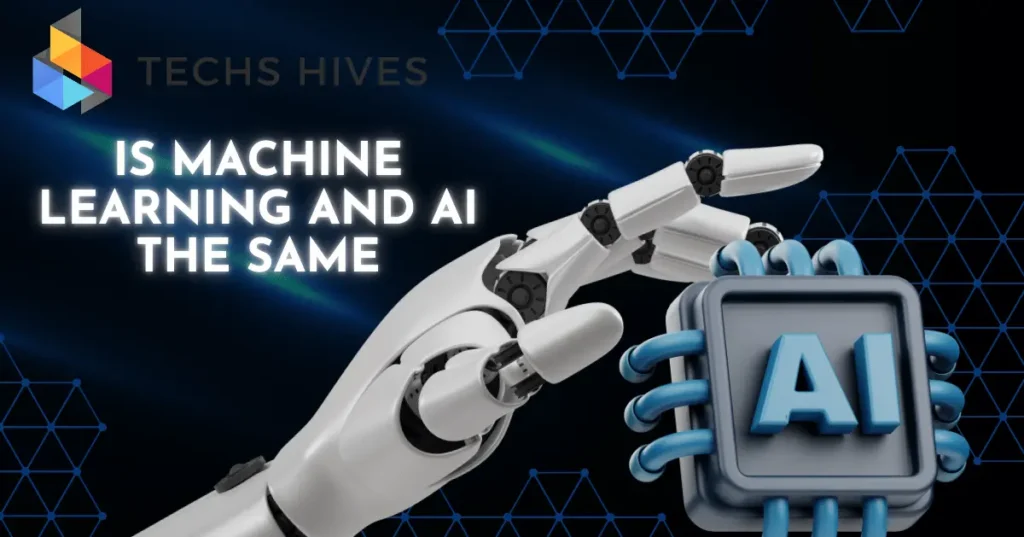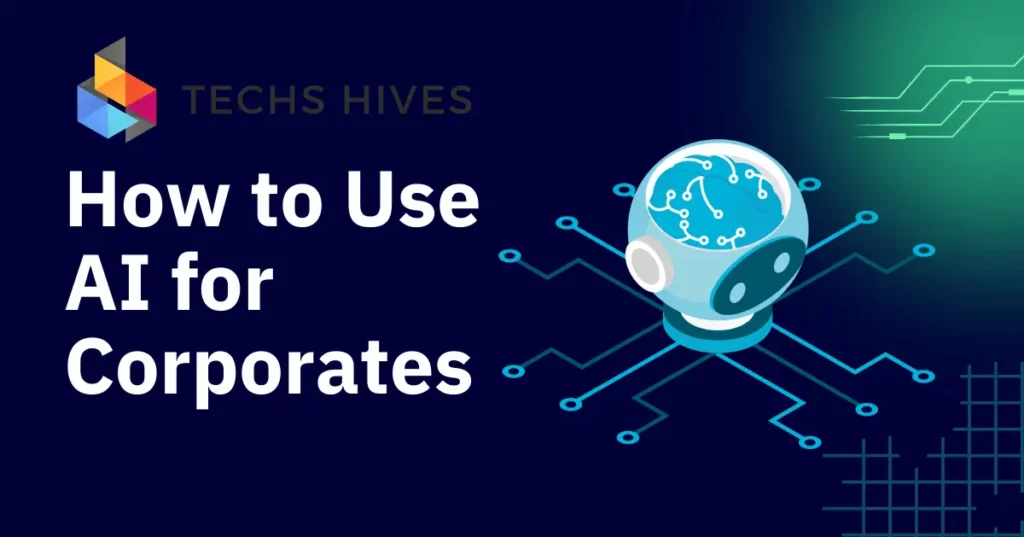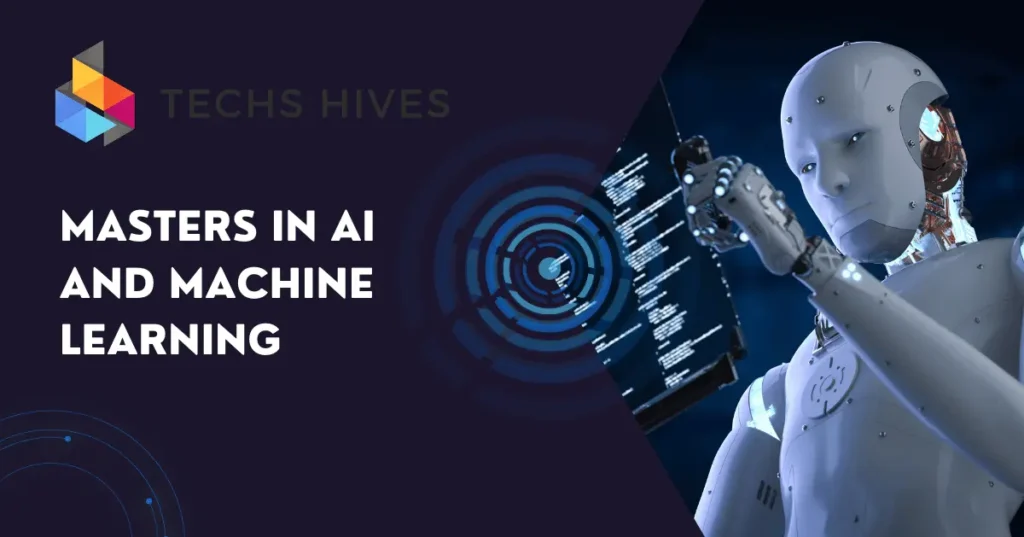Artificial Intelligence (AI) is the ability of machines to perform tasks that usually require human intelligence. This includes understanding language, recognizing patterns, and making decisions. AI can be used in various fields like healthcare, finance, and education to improve efficiency and accuracy.
Machine Learning (ML) is a part of AI that allows machines to learn from data without being explicitly programmed. It helps systems improve their performance over time by analyzing large amounts of information. ML is often used in applications like recommendation systems, fraud detection, and image recognition.
Table of Contents
Artificial Intelligence
Artificial Intelligence Artificial Intelligence (AI) is machines or systems that can do human intelligence tasks like problem solving, speech recognition and decision making. AI uses algorithms and big data to simulate thinking and learning. It’s trying to make machines smart so they can do complex tasks without human intervention.
There are two types of AI which is narrow AI and general AI. Narrow AI is for specific tasks like facial recognition or voice commands. General AI is to mimic human intelligence across all activities (though that’s still theoretical). Most of the AI we interact with today is narrow AI.
AI is used in many industries from virtual assistants like Siri and Alexa to healthcare for diagnosis and treatment. In business, AI is for automation, customer service and data analysis, to be more efficient and make predictions based on past data. AI is growing up.
Machine Learning
Machine Learning Machine Learning (ML) is a part of Artificial Intelligence (AI) where machines learn from data and get better over time without being explicitly programmed. It’s about creating algorithms that can find patterns, make predictions or take actions on large amounts of data. ML helps systems adapt and evolve as they see more information.
There are different types of Machine Learning, such as supervised learning, unsupervised learning and reinforcement learning. In supervised learning the system is trained with labeled data, in unsupervised learning the machine works with unlabeled data to find patterns. Reinforcement learning is machine learning through trial and error to achieve a goal.
ML is used in applications like recommendation systems (Netflix or Amazon), fraud detection, image recognition and natural language processing. It can handle large amounts of data so it’s a key technology in industries like finance, healthcare and marketing to make better decisions and personalization.
Differences Between AI and Machine Learning
| Aspect | Artificial Intelligence (AI) | Machine Learning (ML) |
| Definition | AI is the broader concept of developing systems that can perform tasks that typically require human-like intelligence, such as understanding language, recognizing patterns, and making decisions. | ML is a specific subset of AI that focuses on the ability of machines to learn from data and improve their performance without being explicitly programmed for each task. |
| Scope | AI encompasses a wide range of technologies, including robotics, natural language processing, and computer vision, to create intelligent systems capable of complex functions. | ML is primarily concerned with the development of algorithms and models that enable computers to learn from experience and adapt based on new data over time. |
| Goal | The main goal of AI is to simulate human intelligence, enabling machines to think, reason, and act autonomously in various situations, improving efficiency and decision-making. | The goal of ML is to provide systems with the ability to learn from data inputs, recognize patterns, and make informed predictions or decisions without direct human intervention. |
| Key Features | AI systems involve capabilities like reasoning, problem-solving, planning, and language understanding, and can operate across different fields such as healthcare, finance, and entertainment. | ML involves processes like training algorithms with large datasets, detecting patterns, and optimizing performance based on feedback, making it essential for data-driven applications. |
| Examples | Common examples of AI applications include virtual assistants (like Siri and Alexa), self-driving vehicles, and smart robotics that perform tasks in various environments. | ML is used in applications such as recommendation systems (Netflix and Amazon), fraud detection systems in finance, and image recognition software in social media platforms. |
| Relationship | AI can exist independently of ML, using other techniques like rule-based systems, but most contemporary AI applications leverage ML for enhanced capabilities and accuracy. | ML serves as a powerful tool within AI, enabling machines to become more intelligent and effective in performing tasks, thereby contributing to the overall goals of AI development. |
How AI and Machine Learning Work Together
AI and Machine Learning (ML) are closely related, with ML being a vital component of AI. AI aims to create systems that can simulate human intelligence, while ML provides the methods and techniques that enable these systems to learn from data. This relationship enhances the overall functionality and effectiveness of AI applications.
When AI systems are developed, they often incorporate ML algorithms to process vast amounts of data. For example, in a virtual assistant, AI handles tasks like speech recognition and natural language processing, while ML helps the system learn from user interactions to improve its responses over time. This continuous learning process allows AI systems to become more accurate and personalized in their service.
Moreover, ML algorithms can adapt to new information, enabling AI systems to evolve. For instance, in recommendation systems used by platforms like Netflix, ML analyzes user behavior and preferences to suggest content. As users interact with the system, the ML model adjusts its recommendations, making the AI system more responsive and efficient in meeting user needs.
Common Misconceptions About AI and ML
1. AI and ML Are the Same
One of the most prevalent misconceptions is that Artificial Intelligence (AI) and Machine Learning (ML) are interchangeable terms. While ML is indeed a subset of AI focused on enabling machines to learn from data, AI encompasses a broader range of technologies aimed at simulating human intelligence. This misunderstanding can lead to unrealistic expectations about the capabilities and functions of these technologies.
2. AI Will Replace Human Jobs
Many people fear that AI will completely replace human jobs, leading to widespread unemployment. However, AI is designed to assist humans, not replace them entirely. While it can automate repetitive tasks, it allows workers to focus on more complex and creative responsibilities. Rather than eliminating jobs, AI is expected to transform them, integrating AI tools into various roles.
3. AI and ML Are Always Accurate
Another misconception is that AI and ML systems are infallible and always produce accurate results. In reality, these systems can make mistakes, particularly if they are trained on biased or incomplete data. It is crucial to regularly monitor and refine AI and ML models to maintain their effectiveness and ensure they provide fair outcomes.
4. AI Understands Like Humans
Some people believe that AI understands concepts and emotions in the same way humans do. However, AI lacks true understanding and consciousness; it processes data and follows algorithms to generate responses. AI systems can mimic human-like behavior but do not possess the ability to think or feel like humans.
5. AI Can Solve Any Problem
There is a notion that AI can tackle any problem, given enough data. While AI is powerful, it has limitations and cannot solve every issue. Certain tasks require human judgment, creativity, and ethical considerations that AI cannot replicate. Understanding the limitations of AI helps set realistic expectations for its capabilities.
FAQs
Q1. Can AI exist without Machine Learning?
Yes, AI can exist without ML. AI includes many technologies, like rule-based systems and expert systems, that don’t rely on machine learning. However, most modern AI systems use ML to enhance their capabilities.
Q2. What are some real-world applications of AI?
AI is used in many areas, such as healthcare for diagnosing diseases, in finance for fraud detection, and in customer service through chatbots. It helps improve efficiency and decision-making across various industries.
Q3. What programming languages are commonly used for AI and ML?
Popular programming languages for AI and ML include Python, R, and Java. Python is especially favored for its simplicity and a wide range of libraries designed for machine learning and data analysis.
Q4. Is Machine Learning only about data?
While data is crucial for ML, the algorithms used to analyze the data are equally important. The choice of algorithm affects how well the model learns and performs tasks based on the data it receives.
Q5. What is the future of AI and Machine Learning?
The future of AI and ML looks promising. They are expected to advance in areas like natural language processing, robotics, and personalized medicine. These technologies will continue to evolve and become more integrated into our daily lives.
Conclusion
Artificial Intelligence (AI) and Machine Learning (ML) are closely related but not the same. AI is the broader concept of creating systems that can perform tasks requiring human-like intelligence. In contrast, ML is a specific subset of AI focused on enabling machines to learn from data without being explicitly programmed. Understanding this distinction is crucial for grasping how these technologies work.
As AI continues to evolve, ML plays a significant role in enhancing its capabilities. Together, they drive innovation in various fields, from healthcare to finance. While AI aims to simulate human intelligence, ML provides the tools to achieve that goal by learning from experience.



